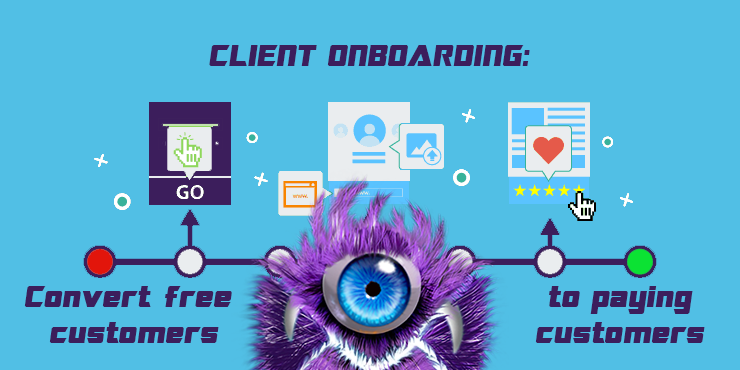The best way to get someone interested in something is by offering it to them for free. Customers are often reluctant to opt for a payment solution without being able to test it beforehand. Why pay without knowing if what I pay has to serve the purpose that I have? A very common reasoning, don’t you think?
Customer loyalty and reaching new potential targets are two objectives that are always on the horizon of any digital marketing strategy. Through customer onboarding you can consolidate their trust in a mutually beneficial way. Communicate more directly with the consumer and inform about your products or services while adding value to them.
To make sure that the free client ends up becoming a paid one, you should make things as easy as possible for them. And this is where the famous onboarding process comes in, which consists of avoiding bad feelings on the first landing of a user in an application that can condition the rest of the user experience.
The use of email for customer onboarding
How many times have you asked yourself what is customer satisfaction? Here you have the answer. It is not something specific. The shopping experience goes from the moment in which all the options are consulted, goes through the acquisition and concludes with the treatment that is received later. It is at this point where customer onboarding strategies can be most beneficial.
According to the customer’s action, you can automate a series of actions that add value to their acquisition. In the field of digital marketing, email is used for customer onboarding as the main strategy. A process of rapprochement between supplier and customers in order to open a new dialogue channel that favors customer retention.
Email workflow for the customer onboarding process
Congratulations! You have succeeded in getting new customers to place their trust in you. But getting a user to sign up for a service or make a purchase is to have won only half the game. The next step to success is to build loyalty.
Onboarding is the strategy that confirms excellence in customer service. If we analyze the flow that follows point by point, we would discover that its anatomy is very different depending on its contents and the moment in which the emails are sent.
This is an example of a workflow that you could use to retain customers at different stages of your loyalty strategy:
1. Welcome email
Your clients deserve a good reception. Among the elements of the customer welcome email you should clarify the tone of your messages (what is the image you want to offer?), Emphasize the value of your product and make a call to action.
To practice excellence in customer service, it is essential to pay attention to both the elements of the welcome email at a formal level, and the content of the welcome email itself.
2. Instruction manual
The worst thing is not that a customer decides not to buy your products again. The really bad thing is that he does it because he has not known how to use his acquisition correctly. Inform, illustrate and motivate with useful content to gain full customer satisfaction after their purchases.
3. Regular communication
After contacting the welcome email, it is time for ‘Have you tried?’. Both those who already trust you and potential new customers should know that you still have a lot to offer. At this point, techniques such as cross selling and content marketing come into play to offer the customer relevant information that may interest them according to their profile, behavior, objectives and purchases made.
4. Make them come back
We miss you ‘is an expression with great potential in digital marketing strategies. Value the possibility of returning to your customers after a while without fear of being ‘annoying’. Persisting in contact is a way to demonstrate the personal value of their purchase and the scope of your offer.
Among the main factors involved in the success of a marketing strategy is the use of good arguments. For this reason, the value of content is as important as the form you want to give your emails for onboarding. Work on these two aspects simultaneously and you will not only win new customers but you will also improve your loyalty ratios.
We must put ourselves in the shoes of our users and make life easier for them so that they do not run away at the first change; It is the best way to ensure that a significant percentage of these end up becoming paying customers. A small investment in training and help at the beginning can mean a big jump in income later.

